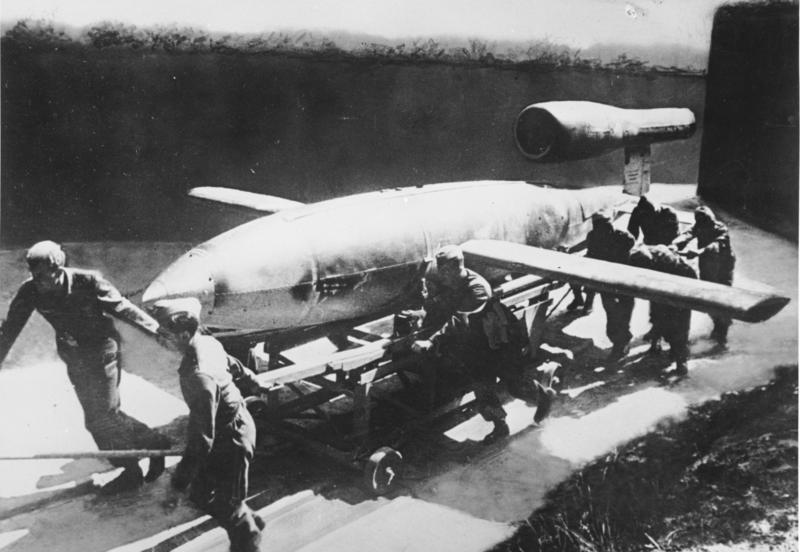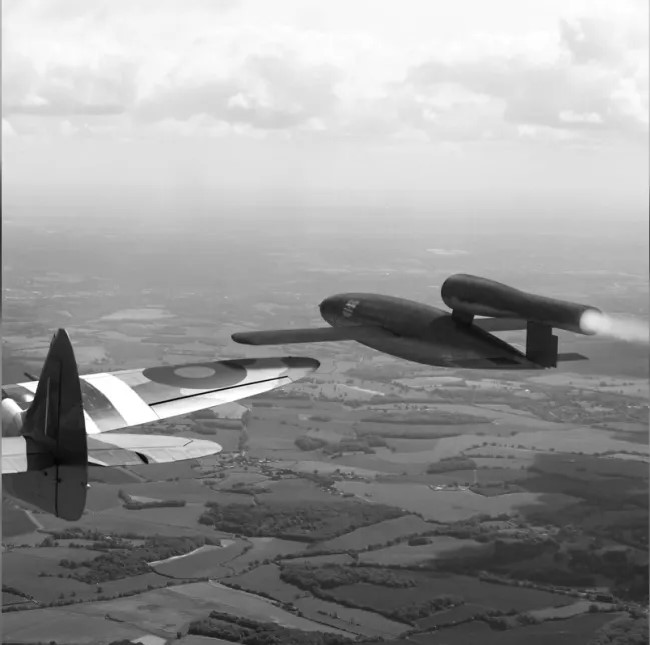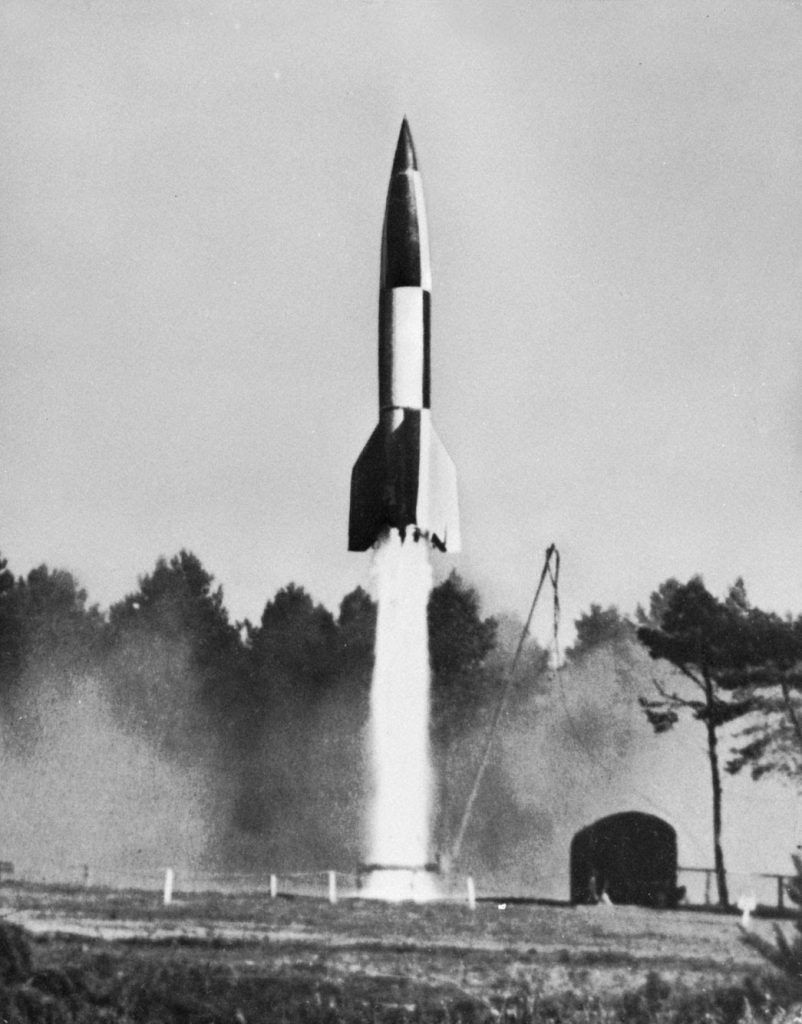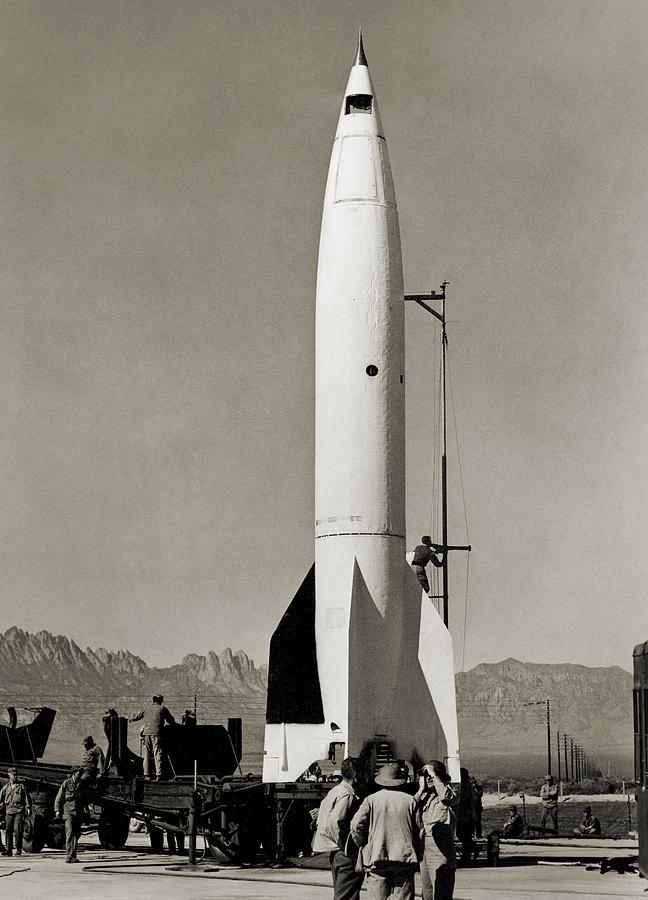The Original Weapons of Mass Destruction or the start of the rocket age
Peenemunde is a small village on the German Island of Usedom renowned for its sandy Beaches and quaint seaside towns. Its history made it popular with Prussian Royalty and later with East Germans but between 1936 and 1945 it had a darker purpose.
In 1935 Wernher von Braun saw it as the perfect place to Test and Develop Rockets since he could fire them into the Baltic Sea. In 1936 frantic building work began on the largest and most modern rearmament centre. Initially around 12 thousand people worked on large scale rockets at the site. The research carried out there was crucial to Hitler’s War and was the bedrock for weapons of mass destruction (WMD) and even space travel.
The leader of the rocket programme was a man called Walter Dornberger.
To start with Hitler was not supportive of the Project until he saw for himself the launch of a V2 Rocket. The V1 was only a cheap way of bombing other countries without the loss of aircrew.

Before the V2 could be fully tested and developed, Hitler wanted a low cost way of hitting London in retaliation for the nightly bombing of German cities which the Luftwaffe could not prevent. What we now know as the V1 was his answer. They could be massed produced just like in a car factory. The Germans copied Henry Ford by using a production line method to build big numbers of V1’s.
A further 2500 concentration camp POW’s were forced to help build the rockets as from June 1943. These slave labourers came mainly from France, Belgium and The Netherlands and under terrible conditions they worked on these weapons.
Around the same time British Intelligence realised the importance of Peenemunde with its long range weapons. The RAF started their interest by mistake. A Mosquito pilot named Flt Lt Steventon flew over Peenemunde on his way to attack the port of Swinemunde. His aerial photos were examined at base but then they were filed away by mistake. 11 months later they were resurrected and a committee was formed to study the project. Something had to be done. On 17th August 1943 the RAF launched Operation Hydra. This was a large scale bombing raid with 596 Lancasters, Halifaxes and Stirling bombers. With a heavy cost, we lost 6.7% of our planes. That was 40 Bombers and around 250 aircrew.
180 German scientists were killed in the raid plus almost 500 Polish slave labourers. The Poles were pre-warned to get out by forcing the gates but they could not do so; they were held back by German Guards. The raid delayed production of the V1 rockets and they moved the assembly line to underground caves in the Hartz Mountains. To build the new lines, the Germans used the slave labourers to excavate the caves and enlarge them. This was a ruthless operation and thousands of the slaves were killed.
So, as the production increased, Hitler used the V1’s as an interim measure until the real objective (the V2) was ready.
By now Allied Troops had landed on the Normandy Beaches and a week later the first V1 hit London. British Intelligence was perplexed by the V1’s. R V Jones, the main Government Scientist said it was impossible to build so we needed to acquire a V1 or at least find its components. On 25th July 1944 an unarmed Dakota Pilot from New Zealand flew from Italy across to Poland at night. There was an airstrip near a V1 factory which also experimented with the new V2’s. The airstrip was used by the Germans in daytime but was not equipped for night flying. The Dakota landed without any lights and Polish Resistance fighters man handled the plane and filled it with 19 suitcases containing wreckage from crashed experimental V2’s along with scores of photographs. After just 5 minutes on the ground, the Dakota stuck in the mud and a further hour was lost digging it out in order to get airborne again. It arrived safely back in Italy and then the cases were sent by ship to London and R V Jones who could now believe them in reality.
In the Summer and Autumn of 1944, 10, 000 Flying Bombs were launched against England. 7488 crossed the coast and 2419 reached London; the rest were shot down by Spitfires, Typhoons and Anti-Aircraft fire. British Intelligence had started a clever ruse. Via a “turned spy”, we told the Germans that V1’s were overshooting London (they were not), so the Germans reduced the amount of fuel and the V1’s fell onto rural Kent instead.

Churchill ordered the RAF to create a ‘fighter free zone’ in Kent and put over 700 anti-aircraft guns there to try and shoot down as many V1’s as possible. Those that survived the fighter free zone were attacked by aircraft, hence the big difference between the number of V1’s launched and the quantity that actually reached London.
Hitler said that he could send V1’s to London in huge quantities and Churchill believed him. That is why the urgent Zone system was adopted. So, only around a quarter of those launched landed on London.
Soon the V2 was ready to be produced in quantities and even further experiments were ongoing to create a huge V3 Rocket that would fly thousands of miles across the Atlantic to the US. That was when the US became interested and sought help from Britain in locating the launch pads.
After D-Day in 1944 the port of Antwerp was initially hardly used by the Allies. It should have been the main avenue for Army Supplies. The Germans saw that the Allies needed such a convenient Port and bombarded the city with V1’s and V2’s. The result was devastation.

Far more people were killed in Antwerp than in London or Rotterdam, the other useable port.
As the Russians and Americans were thrusting into Germany they both came across clear evidence of German rocketry. Recognising the importance of the subject for future space projects they both began immediate courting of the German Scientists involved. Both Russia and the US wanted their experiments and knowledge. They both sent in teams of specialist troops to grab whatever they could find. Largely the Americans won because they offered huge incentives to the German Staff.
The Americans were very choosy. After the War they prosecuted German Generals by the score but at the same time they rewarded von Braun and his Staff and took them and their families to the US where they lived in luxury provided that they worked on what was to become the American Space Programme.
The Russians took Scientists, often by force but the US “bought them with bribes”. Both countries benefited, especially the US with their Appollo Moon Probes.
At that time Britain had very little to offer. After six years of War we were basically bankrupt and our only hope lay in the Communications Field. We had led the world by beating the German’s Enigma at Bletchley Park and now we have GCHQ at Cheltenham which monitors worldwide signals for military intelligence.
During a War every country spares no expense in beating its enemies. From 1939 to 1943 we were on our own and we threw every penny into developing new weapons, especially aircraft like the Spitfire and the Lancaster. The US entered the War very late and only after the Japanese had attacked Pearl Harbour and sunk the main US Battleships did Roosevelt give us full backing.
The US did not care how much it spent. Britain was broke and so we were not in a position to benefit from the ashes of Peenemunde. Peenemunde taught us a number of lessons including ‘do not underestimate your enemy’ and also ‘use your intelligence carefully and do not waste any of it’.
Hopefully we have used intelligence much more wisely since 1945 and this policy has produced a Britain that is probably more prepared for war than ever before in it’s history.
Post 1945
Von Braun and Dornberger realised in late 1944 that the War was lost but they couldn’t let their rocket research be wasted so they made overtures to the US via the Embassy in Portugal offering their services in return for their freedom. In fact they both went to Austria and surrendered to British Forces there. They were imprisoned in Britain for a while but, under pressure, we let them be released into American custody. They were taken to the US along with about 100 other scientists and were set to work in El Paso, Texas.

Their personal history records were wiped out and destroyed, even their membership of the German SS and their involvement in procuring thousands of slaves slaughtered in the Hartz mountains.
As a screen, von Braun worked for General Electric in developing the Apollo Rocket which first circled the Moon. There is no doubt that he was a genius but he was too important to hang. Von Braun died at the age of 65 in Virginia. He had portrayed himself as a victim of the SS rather than a perpetrator. In other words he benefited from multiple murder and got away with it. He died of Cancer in 1977, aged 65 in Alexandria, Virginia.